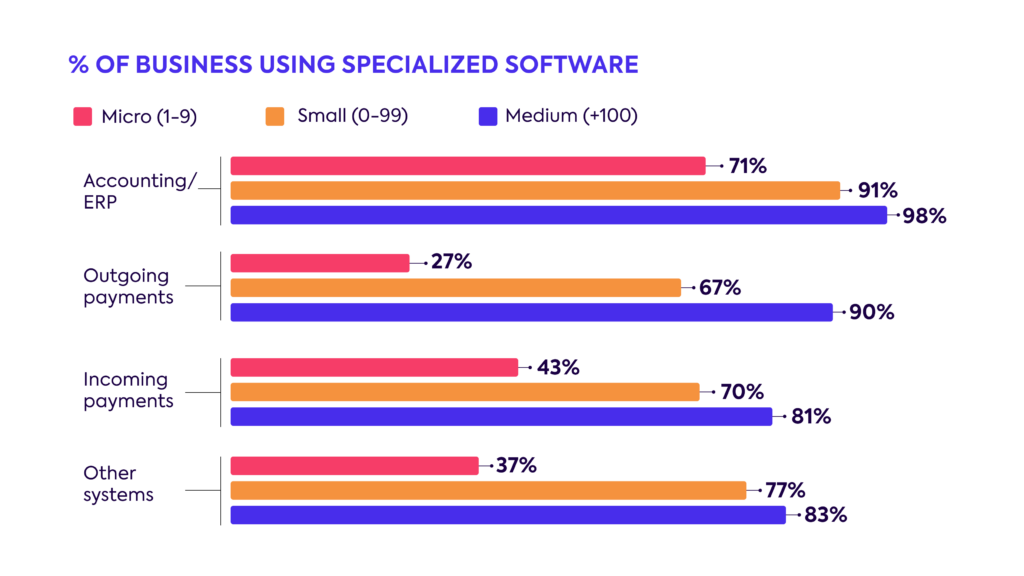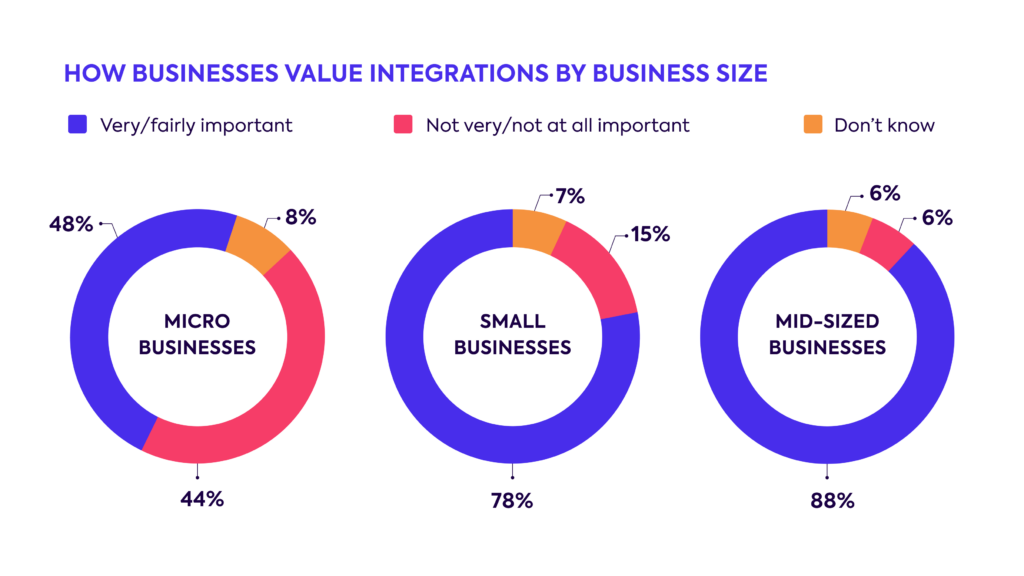
In the face of today’s unpredictable economy, many fintechs and financial service providers are placing a renewed focus on boosting customer lifetime value. One effective way to achieve this is by investing in features that help to attract and retain high-growth, mid-market business clients. But executing this strategy successfully is easier said than done.
To help providers overcome this challenge, Gabby MacSweeney, Head of Brand and Communications at Codat, recently sat down with Roi Ben Daniel, CEO and Co-Founder of Received, and Amy Roberts, a Product Manager at Codat. During the session, the panel delved into the differences between small businesses and mid-market customers and the challenges associated with developing products for this more discerning segment.
Check out the highlights from that conversation below, or watch the full community session on-demand here.
“You need to understand and love the persona you are building for”
The first step in building any winning product is developing an in-depth understanding of your target audience. This is especially true when it comes to mid-market customers whose problems, needs, and priorities can differ greatly from those of smaller businesses.
As Amy Roberts, Product Manager at Codat, explains, mid-market businesses face a unique set of challenges, and this often results in them seeking more tailored and industry-specific solutions that can help them meet their complex needs at scale.
Roi Ben Daniel, CEO & Co-Founder of Received, shares this sentiment, pointing out that “If you build for the SMB, in most cases, you are building a generalist product. It might be comprehensive but not necessarily deep when it comes to capabilities”. This is not the case when building products for the mid-market.
The group also highlighted the importance of anticipating the changing needs of business customers as they evolve. “One of the critical differences with the mid-market is that they want to partner with people who can offer expertise and build long-term relationships as they transition and scale their business,” explained Amy. This means understanding how your product fits into your customers’ tech stack and interacts with their other essential systems at each stage of their growth.

“The difference between a product for a mid-market company and one for an SMB is specialization”
So, how does the team at Received apply their extensive knowledge of the mid-market to their product strategy? According to Roi, the key is specialization. In other words, recognizing that “in an SMB, everyone is a jack of all trades. However, in a mid-market company, employees focus on their specific area of expertise and dive deep into their specialization”.
“If they have a finance team, they are a mid-market business and a customer we want to serve.”
By focusing exclusively on solving the complicated and unique issues faced by finance teams, Received has developed a comprehensive billing platform that B2B software companies depend on to streamline their contract-to-reconciliation process, or “solve B2B revenue spaghetti”, as Roi likes to put it.
It’s worth bearing in mind that mid-market companies are typically savvier buyers with more robust procurement processes. They are not willing to accept a one-size-fits-all solution or a product that only partially meets their requirements. To win their business, it’s important to demonstrate an understanding of their unique challenges and offer a product with advanced features and capabilities that will help them overcome them.
“The ERP system is the sun with all other systems revolving around it”
If there is one thing you can rely on, it’s that mid-market companies place a great deal of value on their ERP system.
In fact, a recent survey carried out by Codat found that ERP software is considered a critical part of the tech stack for many businesses, with 52% listing it as such. The same survey also found that businesses with 100+ employees were more likely to value integrations when assessing a new tech platform, and interoperability was the third-highest purchase driver for their tech stack after cost and functionality.


It’s no wonder Roi considers integrations a “conversation starter” when it comes to attracting mid-market customers. “If you can’t move data into NetSuite and vice versa, no one will buy your solution, he explains.
This is because ERPs are critical to SMB operations and require a significant upfront investment of time and cost. Their modular features are typically tailored to the specific needs of each business and affect multiple departments and employees, making them difficult to replace. As Roi rightly points out, “The ERP system is like the sun, and all other systems and processes revolve around it.”
With the need for integrations to ERP systems clear, the decision then becomes whether to develop this connectivity in-house or outsource the work to an expert third-party. For Roi and the Received team, the choice was simple. “I shiver just thinking about the resources I would need to dedicate to building ERP integrations in-house, he explains.
Building your own ERP integrations can be a challenging, lengthy, and costly endeavor. Each ERP system has its own distinct behavior and an extensive database, making it a highly technical process that requires skilled engineers with knowledge of different languages and complex accounting principles. That’s why Received turned to Codat for help.
“Codat is like the connectivity tissue. Without it, it’s really hard to build something meaningful for mid-market companies.”
If you want to learn more about how you can build robust, turnkey accounting and ERP integrations like Received, get in touch with a member of our team using the form below—or sign up for a free account to try them out for yourself.
About Received
Received is a billing platform specifically designed to meet the complex needs of B2B mid-market software companies. Received streamlines and automates the contract-to-reconciliation process, while allowing companies to modify their pricing at anytime to keep a healthy cash flow and eliminate IT spend.
You can learn more about Received here.